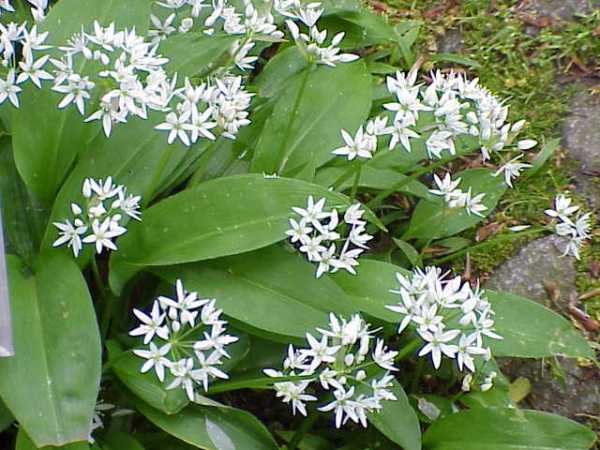Wild onions or wild garlic is a plant whose properties, in traditional medicine, have been used for a long time. Avicenna also mentions in his treatises the benefits of wild garlic. This plant has not lost its relevance in our time..
Table of contents
Characteristics of the plant
Herbaceous plant, perennial, belongs to the onion family. It is resistant to frost, able to withstand low temperatures, up to 50 degrees. The vegetative period of the land part of the plant lasts from autumn to spring.
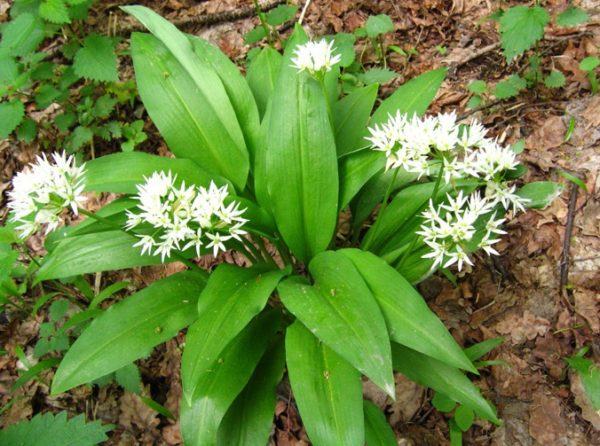
In appearance, a wild bow is very similar to a poisonous lily of the valley, until it has an arrow of a peduncle. A distinctive feature of these plants is the presence of garlic smell in wild onionsthat appears when rubbing a leaf with your fingers. Depending on the place of growth, the color of leaves varies from light green to brightly saturated.
Distribution area
It grows in all corners of Russia, especially in its central and southern parts. Extensive thickets of wild onions can be seen in the Tula forests. It is found in the Far East, and in the Caucasus, Siberia and Bashkiria. It prefers wild onions to moist soil, therefore it grows near rivers, lakes, in the shadow of deciduous forests. Growing, it forms large thickets, occupying large areas.
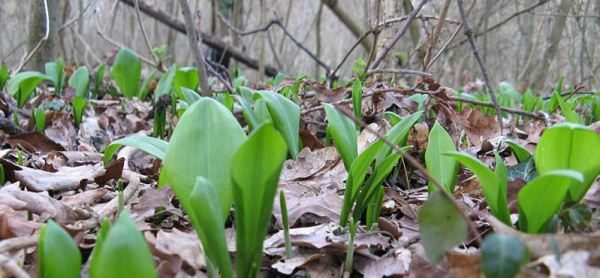
Wild onions or wild garlic - this name combines two species of the same plant. The composition and properties of both species of wild onions are the same. The difference between one and the other is in flowering time and size.
Bear bow
This is a herbaceous perennial plant with a root system in the form of a small bulb, about a centimeter in diameter. From each such bulb develops two wide lanceolate leaves, sitting at the very base of the triangular stem. The stem itself is “naked”, without leaves. Its height can reach to 15 – 40 centimeters.
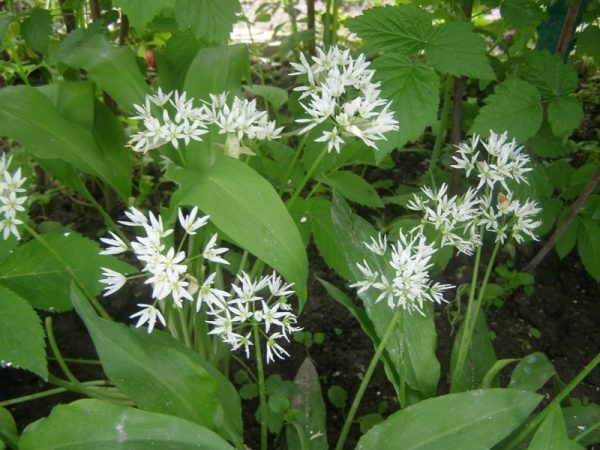
Ends the stem inflorescence in the form of an umbrella. The flowers are small, white or light tone, with a pleasant smell. Blooms in May - early June. And by the end of June - the beginning of July, seeds of black color of round shape, which are in a trihedral box, already ripen.
Vegetation begins in early spring and ends early.. Over the two spring months, a bear's bow goes through a full life cycle, from leaf development to full seed maturation. At the end of June, the leaves with the stem of the plant wither and die. Only the bulb sitting in the ground remains viable, which, with the onset of the new spring, awakens and gives rise to a new plant.
Bear onions are the earliest greens that appear in spring and are in high demand. The extermination of this onion in the woods led to a sharp decrease in the population of this species. Currently, bear bow harvest is prohibited by law., it is listed in the Red Book.
Victory Bow
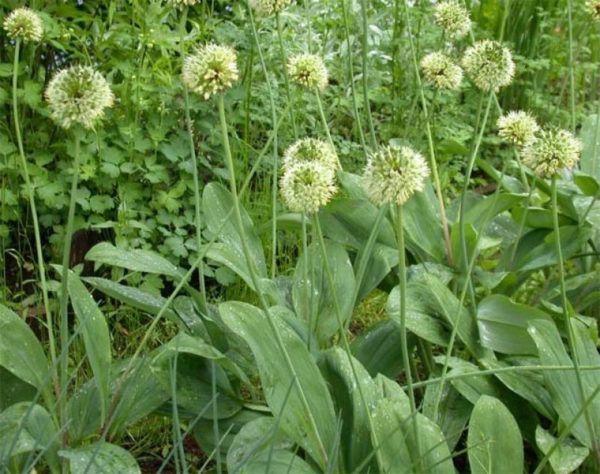
Unlike bear onions, it is a larger plant. The rhizome consists of several bulbs, one to two centimeters thick. During the growing season, each bulb germinates, and one plant forms a whole bush. The leaves are wider and larger, lanceolate or elliptical in shape, in the amount of three pieces, pointed, ending with a petiole. The stem is half-cylindrical or triangular in shape, reaching a height of 70 centimeters.
It ends with an inflorescence of small flowers, in the form of an umbrella, hemispherical in shape, which have a delicate honey smell. The size of flowers in the onion is smaller than that of its relative.
The composition of wild onions
Ramson is a valuable food product that contains vitamins, trace elements, essential oils.Eaten all parts of the plant. These are leaves, stem, bulb. Preparation of ramson leaves is carried out in the spring, before the flowering of the plant. At this time, it contains, in its composition, the largest number of valuable and useful substances for the human body.
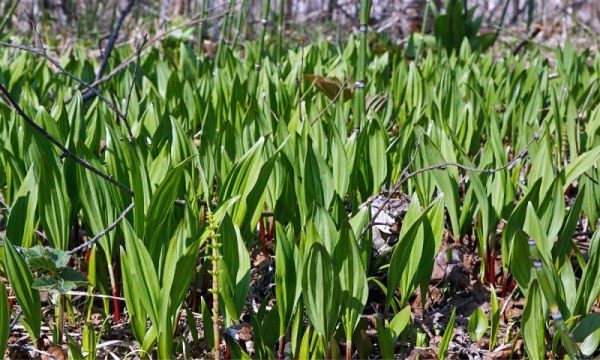
Vitamins
- Vitamin C - is found in the rams in equal amounts and competes with products such as black currants, oranges and lemons, sauerkraut. It helps to increase the body's resistance to various infections.
- B vitamins - have an anti-stress effect on the nervous system, improve the condition of the skin and hair structure, ensure the normal functioning of the intestine.
- Vitamin A - is a barrier to the development of skin diseases, improves the functioning of the organ of vision, has a positive effect on the cardiovascular system.
Essential oils
- Phytoncides - volatile substances with antiviral and antimicrobial action. They have a therapeutic effect in various inflammatory processes and infections.
- Trace elements - boron, zinc, magnesium, potassium, calcium are involved in strengthening the immune system, help to slow down the aging of the body.
Beneficial features
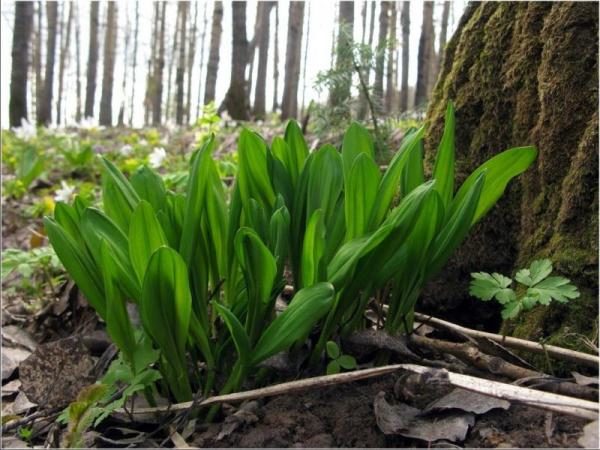
The unique chemical composition of the plant makes wild garlic useful for almost all body systems:
- The cardiovascular system - the presence of potassium in the garlic leads to an improvement in the contractility of the heart, a decrease in blood pressure and the level of cholesterol in the blood.
- Digestive system - promotes an increase in appetite and the fight against intestinal infections, normalizes the work of the intestine.
- Nervous system - has a calming effect and reduces the threshold of excitation of the central nervous system.
- Effective with external use - treatment of warts, various forms of dermatitis, pustular rashes, diathesis in children.
Use in traditional medicine
Ramson from ancient times was known not only as a useful plant for food, but also as a doctor of various diseases, both internal and external. Different broths, infusions, compositions were made from wild garlic.
This plant is used as a medicine, and now. A large number of various allergic reactions to a particular medical drug, forcing patients to increasingly resort to recipes of traditional medicine.
Hypertonic disease
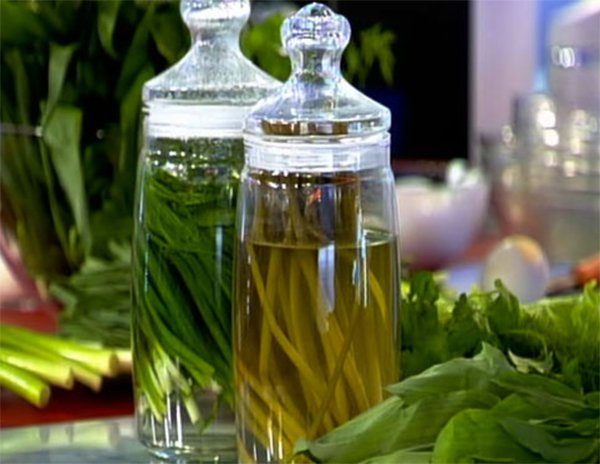
Tincture of wild garlic: 1 part of crushed fresh leaves is poured with 5 parts of vodka and infused in a dark place for three weeks. After filtering the composition, the tincture is ready for use. 20 drops are taken in 15 ml of water three times a day for three to four months.
Dysbacteriosis
One tablespoon of fresh garlic juice, diluted with a small amount of water, is taken before meals three times a day. The course of treatment for a month.
Runny nose and cold
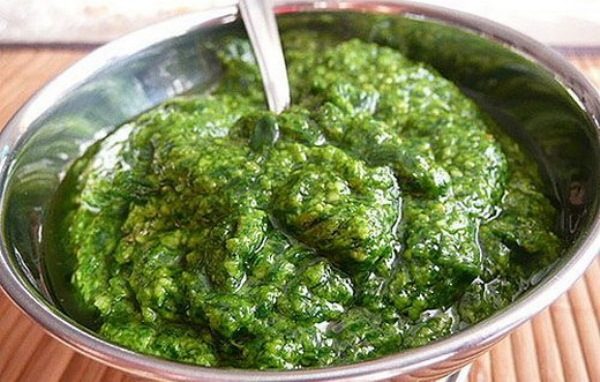
Crushed fresh ramson leaves are wrapped in cheesecloth and in the form of tampons are introduced into each nostril on 10 – 15 minutes several times a day.
Rheumatism
Racket tincture: one part of the crushed fresh leaves is poured with four parts of vodka and infused for one and a half to two weeks. Used to grind diseased joints, including arthrosis, sciatica, twice a day to relieve pain.
Helminthiasis in children
Crushed plant leaves poured boiled sunflower oil and infused during the day. After filtration, the oil of wild garlic is used for microclysters.
Use in cooking
Ramson is good not only as a remedy. It is widely used in cooking in the form of salads, appetizers, in the first courses, as an addition to meat and fish dishes.
Spring Salad
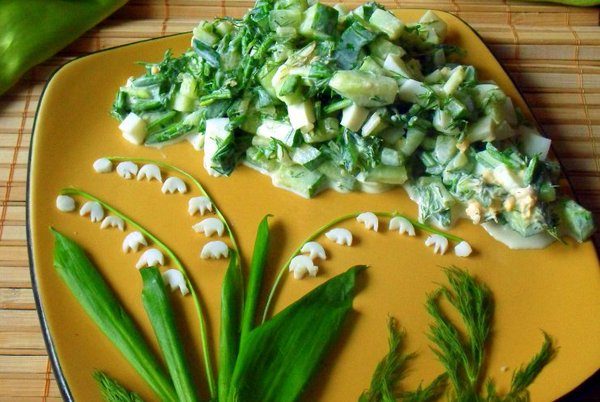
A bunch of wild garlic leaves is finely chopped and combined with three chopped eggs. Peeled fresh cucumber is shredded into thin straws. Ingredients are connected. To taste is added salt, ground pepper. Salad dressed with sunflower or olive oil.
Vegetarian soup
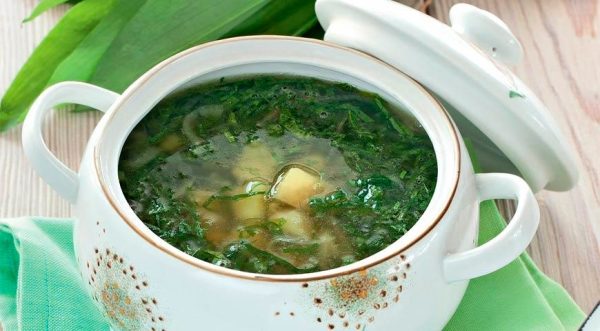
Potatoes cut into strips are added to boiling vegetable broth and cooked for 10 - 15 minutes. Paste onions and carrots, which are added to the soup, separately. A few minutes later put about 200 grams of chopped wild garlic. The soup is seasoned with spices and salt to taste.. Optionally, you can add a spoonful of sour cream.
Ramson garnish

Sliced leaves and stalks of wild garlic are laid out on a griddle with sunflower or olive oil. After the greens are reduced in size, tomato paste and a little soy sauce are added. The dish has a delicate and pleasant taste with a slight sourish tint.. It can be included in the diet as a separate dietary dish, or as a side dish for meat, mashed potatoes or buckwheat, rice.
Thus, nature continues to give man amazing plants. Keeping wild onions in nature, a person provides himself for many years not only with a green pharmacy, but also with an additional vitamin product.
